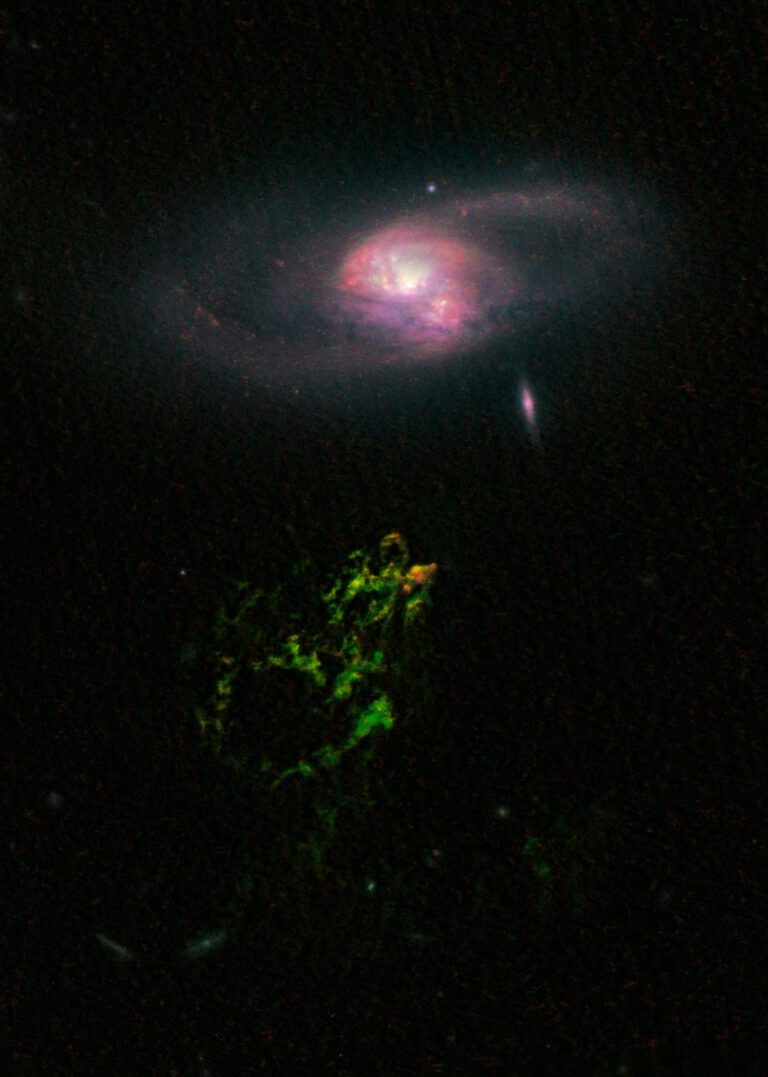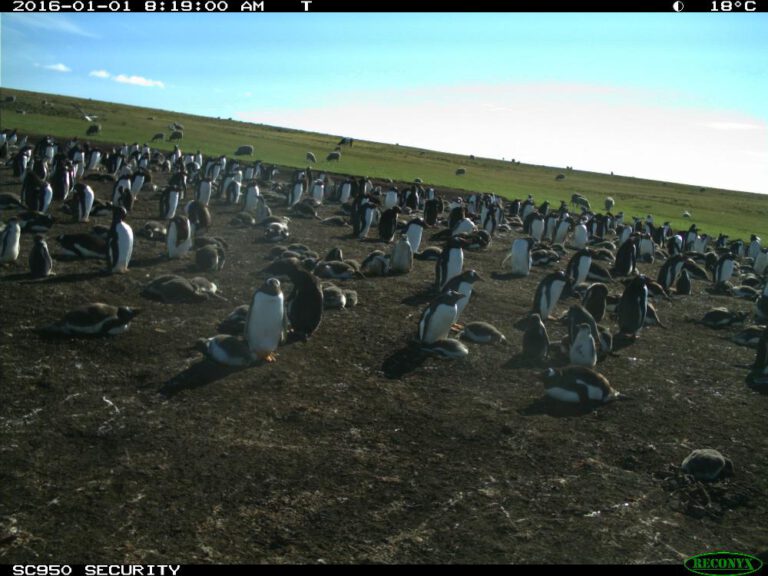About citizen science. And penguins, voorwerpen, and old weather.
Science is not the property of educated professionals. With a little guidance, everyone can contribute to our collective knowledge. Chris Lintott, the Principle Investigator of Zooniverse, explains the concept and success of citizen science in the book “The Crowd and the Cosmos.”
Hanny’s Voorwerp
It was a summer evening back in August 2007. Hanny van Arkel stared at a screen, her mind fixated on a curious task. Pictures of galaxies flashed in front of her eyes. Every time a new image appeared, whether it was a glorious portrait of spiral arms or a simple red smudge, Hanny took a moment to admire it before clicking a button to classify it. She came upon an image of a beautiful but otherwise ordinary spiral galaxy. She was about to move on when a greenish smear close to the galaxy caught her attention. It didn’t look like any galaxy she has seen before. What was that?

Hanny’s Voorwerp1Voorwerp means object in Dutch., as the greenish smear came to be known, stirred the scientific community. The smear is not a galaxy but rather a patch of glowing gas lying at a distance of 50000 light-years from the spiral galaxy. About 50000 years ago, the active nucleus of the galaxy emitted light that has by now reached the gas, making it glow2Well, given the distance to the galaxy, it took light about 780 million light years to travel to us. Now in this sentence is therefore used in a slightly misleading way.. What is fascinating is the observation that the galaxy is not active anymore! Thanks to Hanny’s discovery, we thus found compelling evidence that galaxy nuclei can turn their activity on and off rather quickly on the cosmic timescale.
The discovery was interesting for another reason: Hanny was a Dutch schoolteacher, not a professional scientist. But she was curious and fascinated about the Universe, so she participated in an online Galaxy Zoo project. The initiative asked volunteers from all over the world to look at images of galaxies and classify them. Is it a spiral or elliptical galaxy? Are the spirals turning clockwise or anti-clockwise? Millions of science enthusiasts responded to the call to help the professionals with classification. As Hanny found out, the images also harbored secret treasures, waiting to be discovered by curious minds.
Zooniverse – calling out for help
Galaxy Zoo is the brainchild of Chris Lintott and Kevin Schawinski, researchers at Oxford. They wanted to study galaxies observed in a Sloan Digital Sky Survey; not just any galaxies, but a particular subset. Finding their subset among the formidable dataset of millions of galaxies turned out to be a bit too much to handle. Machine learning had yet to become as sophisticated as it is today, and they didn’t have time to classify all the galaxies by hand. They needed help, and they realized the potential of a crowd: thousands of volunteers would easily and quickly classify the galaxies.
The rest, as they say, is history. Galaxy Zoo was a huge success. Many people were willing to spend some of their free time to help the researchers. The classifications lead to significant and influential publications tackling different aspects of galaxy evolution. The success didn’t go unnoticed by the scientific community. What started as one galaxy classification project turned into Zooniverse, one of the largest platforms where non-experts can help professionals with their research.
I urge you to visit the Zooniverse website. You will be surprised by the versatile projects to which you can offer some of your time. Not interested in astronomy3Are you sure?? No problem! You can classify babies’ speech sounds to learn about language development, count penguins to understand the decline of penguin populations, or help identify fish species on old Dutch paintings to learn about fishing and fish populations. The projects are entertaining and addictive—non the least because deep down, you know that your participation adds to the collective knowledge.

Apart from the Hanny’s Voorwerp, several other fun revelations came from the astronomy side of the Zooniverse. For example, the volunteers spotted small and round green pea galaxies. The galaxies had been known to professional scientists for a while but had not been given much attention before the volunteers pointed them out. Green peas form stars at an incredible pace and probably play the central role in the reionization of the Universe. The diligent volunteers also discovered the weird properties of a star now known as the WTF or Tabby’s star. The erratic variability of the star’s brightness is difficult to explain, and it has even been suggested that it might be due to—aliens 4A fun hypothesis, though unlikely. More likely scenarios involve obscuration by dust, though it is not yet clear what the actual mechanism could be.
!
What makes a scientist?
The idea of calling out for help and to employ the power of numbers to tackle a problem is not new. Lintott gives a number of historical examples of how professional scientists, sometimes more sometimes less successfully, collaborated with non-professionals to gather data for their research. All these projects had a flaw, though. The scientists, the venerated scholars, distanced themselves from the volunteers. More often than not, the collaboration was one-sided; the data flowed to the scientists who rarely gave feedback or acknowledgment to those doing the fieldwork. That is not how it should be.
There is a reason why we don’t use the term crowdsourcing when it comes to Zooniverse (and similar projects). It doesn’t do the volunteers justice, because they are part of the scientific process. Everyone in the process, whether a volunteer collecting data or the professional designing the experiment and performing the final analysis, is doing science. A better, less dogmatic term to describe a volunteer is citizen scientist.
It’s not only the naming. Professional scientists who design citizen science experiments are actively engaging in discussions with volunteers. Citizen scientists are properly acknowledged in publications—they even become co-authors of publications if they critically contributed towards the research (like Hanny). And don’t be fooled; while most citizen scientists may not do much more than follow the instructions, many take the job very seriously by doing their own investigations and communicating with professionals. If they are not scientists, who is?
Is there a place for citizen science in the future?
Despite the success of citizen science projects, it isn’t clear whether the concept will continue to flourish in the future. Machine learning has improved terrifically; the classification that was impossible a few years ago is now a piece of cake for the highly-developed algorithms. At least in astronomy, the improvement came in part due to the large database classified by the citizen scientists. So, is the era of citizen science slowly going to end? Will there be anything that the algorithms cannot do better than humans?
According to Lintott, there may still be room for human computers in the future. One problem is that machines have to be taught what to search for. The moment the machine encounters something unexpected, a feature that scientists haven’t anticipated, it will likely go unnoticed. Machines are good for finding more of the same, for building statistics. When it comes to the unpredictable, humans are still the best bet. In a few years, the Vera Rubin Observatory will start scanning the night sky. The observatory will find millions of transient sources5Transients are sources whose brightness change over time. Typically, transients are sources who suddenly appear in the otherwise dark patch of the sky, and disappear over some time (days, weeks or months). each night. Machine learning algorithms will be indispensable to get a hold of all those data. However, following the initial classification, the fun only starts. Astronomers all around the world will be eager to make additional observations of rare events, or other less unique, yet still interesting phenomena. Scanning through all the transients will take forever… unless you have an army of volunteers. It sounds like a job for citizen science!
There is another aspect of citizen science. Volunteers don’t only perform the tasks that are asked of them; they also learn about the topic they are interested in. Non-professionals learn of the scientific method, and the most patient and conscientious among them even become experts in a field. Clearly, many people find science interesting enough to engage in it actively. Wouldn’t it be sad, and damaging to the cause of science communication, to take away the science from people?
Machines are accurate and reliable. We have the algorithms under control (or so we think). But machines are not curious. They do what we tell them, nothing more. Scanning the old navy records for details about the century-old weather, a machine will not pause at a passing personal note from the ship’s officer—his wonders, annoyances, and grievances thus missed and lost forever.